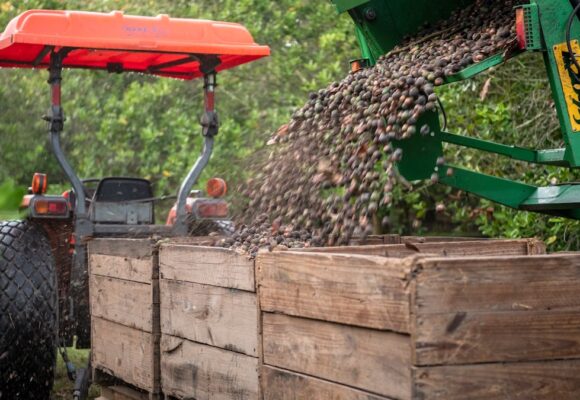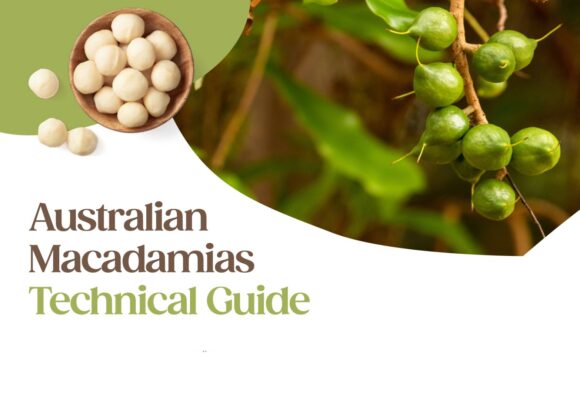Who is our Japanese consumer?
Japan is a core market for macadamias, with a distinct preference and high regard for kernel of Australian origin. The growth in this market over the past seven years has been driven strongly by our marketing program, which is guided by regular consumer research, allowing us to delve inside the minds of Japanese shoppers and better understand how our product is perceived and what motivates them to purchase.
The first consumer study was undertaken in 2008, followed by another in 2013. In 2015, we have completed analysis of current market insights gathered from social media and in-market intelligence, which we have overlaid with our existing research to create a detailed profile of our Japanese consumer, just as we have done with our Australian und German consumer.
Setting the scene

The typical Japanese macadamia consumer is an independent and self-assured female aged 25 to 40. She lives every day with energy and vitality, yet she is conscious of acting gracefully and behaving in a manner that she feels aligns with her inner beauty.
Recent rapid socio-economic changes have given Japanese women many opportunities in society and more women are pursuing active roles in various fields. They are busier than ever, seeking to achieve optimum health in both body and mind, and more effective and powerful ways of working that will not compromise their core desires.
Way of eating and reason to choose
The most popular way for our Japanese consumer to eat macadamias is in confectionery products, such as chocolate covered macadamias. Several high profile confectionery brands play a role in this preference, including Meiji, Glico and Lotte.
Other popular forms include eating macadamias on their own as a snack or enjoying them in baked goods such as cakes, cookies and pastries. Because of their smooth texture and crunch, she may also enjoy them as an accompaniment to an alcoholic beverage. However unless she is a particularly heavy macadamia user, she won’t use them in a cooked meal or buy them in shell.
Taste is the primary reason she eats macadamias – 45% of female respondents say this is their main reason for purchase, and taste is a stronger purchase driver for macadamias than it is for any other nut. If she is particularly knowledgeable about macadamias, she will probably also buy them for their high nutrition values, anti-ageing beauty benefits and dietary support for weight control.
Our Japanese consumer perceives the image of macadamias to be premium. This is a function of their high retail price, but also their unique texture and rich, creamy, buttery taste. Because it is premium, she feels she is enjoying a “special treat “when eating macadamias.
Current trends and opportunities
Health conscious and hungry for information:
Compared with a couple of years ago, 31.7% of female Japanese consumers say they’re eating healthy food more often and 40% say they are researching food, ingredient and health matters online more often.1
This is good news for macadamias, as our 2013 consumer research revealed that although macadamias are regarded as delicious and premium, many of their health benefits were yet to be discovered. 85% of our Japanese consumers are very or somewhat interested in the health benefits of macadamias and they would like to consume more if they knew that macadamias offered the following:
• Anti-ageing properties
• Good for blood vessel health
• Burn fat as diet support
• Good for the brain
• Lowers cholesterol
• Cholesterol free
On the go:
In recent years, the traditional three meals per day has become a fragmented series of snacks in Japan. It is thought that the growing habit of skipping breakfast has been the catalyst for this shift, creating new opportunities for healthy snacking in this market.2
Portable and premium:
Increasingly busy lifestyles have led to demand for products that can be consumed on the go. However this doesn’t mean that Japanese consumers are willing to accept a trade-off between portability and quality. Demand for products that tick the health, quality and portability boxes is high and the recent boom in blender sales among women signals the popularity of this ‘quick and quality’ movement.
Home: the new social hub
Time spent at home is more important than ever in Japan. Traditionally, Japanese homes were purely practical, providing a functional living space that was only ever shared with family. However this has changed and in-home entertaining has become a popular past-time. Home is now seen as a more public, social place, where premium occasions take place, driving an increase in spending on premium items. Old-style, basic houses with small, crowded kitchens are making way for open, personal concepts in housing. It is now common for women to host all-female parties at home to share ‘little luxuries’ such as premium food and beverages.
Key purchase drivers
When making purchase decisions, our Japanese consumer is likely to focus on several key drivers:
1. Natural ingredients: she knows that what she eats affects her health. She seeks out products with few or no additives or preservatives in order to keep her body healthy.
2. Anti-ageing: her quest to keep her skin healthy and youthful is ongoing.
3. Portability: products that can be taken out with her make her busy life easier.
4. Accessible premiumness: She loves to indulge in a little treat after a long hard day. It doesn’t need to be super-premium or overly luxurious, but she seeks something fulfilling, that offers a quality sensory experience and induces a feeling of happiness.
She prefers products that will support her life and keep her fulfilled, without getting in her way. That’s why macadamias fit her lifestyle so well.
Changing the macadamia stereotype
At the time of our first consumer profiling back in 2008, it was revealed that our Japanese consumer regarded macadamias as a chocolate souvenir from Hawaii. It was a stereotype based on media coverage and the widespread habit among Japanese consumers of purchasing chocolate covered macadamias while on holiday in Hawaii.
Since then, our messaging has focused heavily on taste and removing the association with Hawaii as the place of origin, replacing it with Australia. Subsequent research has shown that our Japanese consumer is now far less likely to associate macadamias with Hawaii and souvenirs and more likely to associate them with good taste and premium quality.
Der Blick in die Zukunft
With a strong link now forged in the minds of our Japanese consumers between premium quality and Australian macadamias, we are well positioned to enter the next phase which will involve deepening the relationship with current consumers and broadening our reach.
With strong interest in health and daily consumer habits lending themselves to a heavier emphasis on snacking, macadamias sit perfectly in the ‘healthy snacking’ space.
In addition, the rise of in-home entertaining paves the way for educating consumers on how to cook with macadamias, introducing them to new and innovative ways of incorporating them into meals.
Finally, for manufacturers, there is the opportunity to use macadamias as an ingredient in other food products, enhancing their premium appeal and riding on their increasing popularity.
Möchten Sie mehr erfahren?
If you would like more information on any aspect of the Japanese consumer research, or would like to discuss how macadamias can enhance your next product development, please feel free to contact lynne.ziehlke@macadamias.org
1. HAVAS Prosumer Report – The Future of the Body 2015
2. Mintel April 2014 Snacks Japan Market Overview


